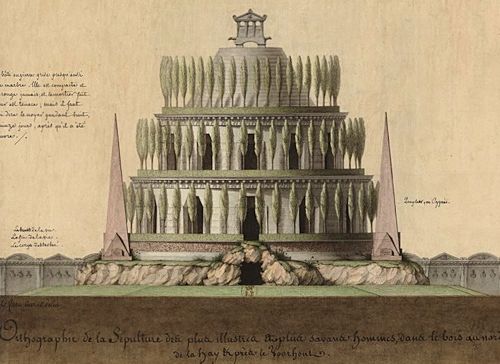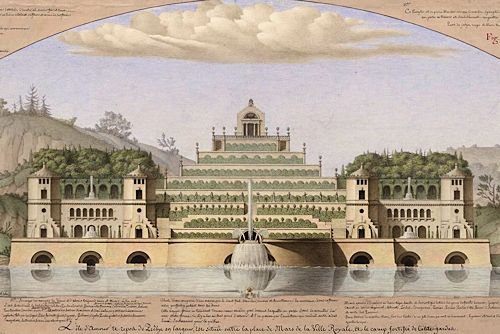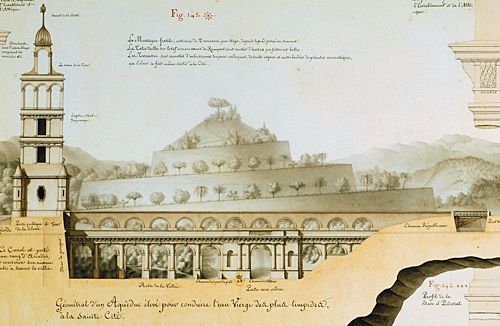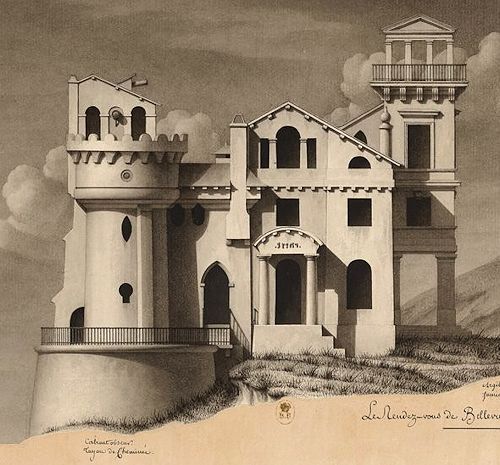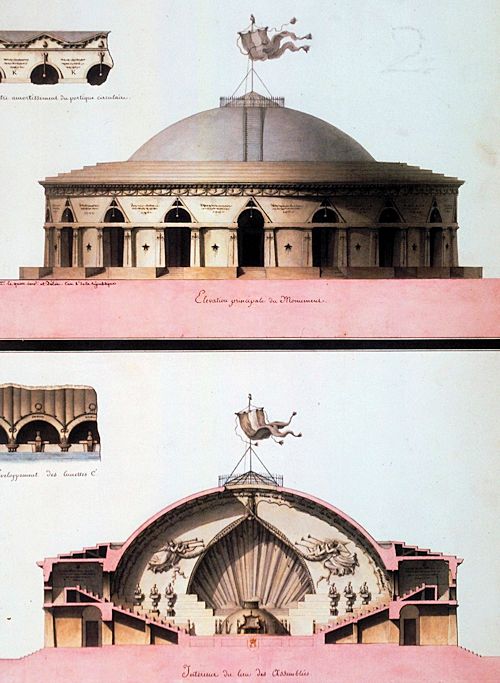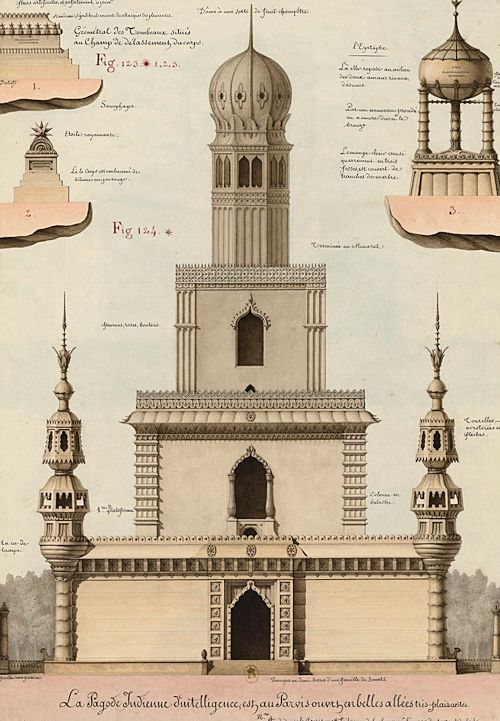LeDeuzzy, Q. |
I believe in multiple choice |
|
|
|
A pile of primordial scale is the Tomb Monument near Voorhout (Sépulture des plus Illustres et des plus Savants Hommes pres Voorhout) This is built up by receding cylinders and a massive conical dome topped by a temple. Tall flanking obelisks and cypresses planted on the terraces add dramatic accents. According to a note on the back of this drawing, Lequeu submitted it to the Président des Etats Géneraux . . . des Pays-Bas in 1785. | The Island of Love is another great dream of the architect-poet. Stepped terraces crowned by a temple are flanked by lower houses. In the extraordinary variety of architectural features and in the marginal description of the fountains and the flowers, the birds and the beasts of the park, we recognize Lequeu's exuberant fantasy which distinguishes him from the austerity and the restraint of Boullée and Ledoux. Somewhat morbid and perhaps even somewhat infantile, he appears in this house from fairy-land almost like one of the common-run Romanticists. Yet we must give him credit for his great inventiveness and his comparative independence from his models. The whole is strictly symmetrical, whereas asymmetry is stressed in two other designs. | The one is the aqueduct with the Sainte Cité in the background; its tower to the left has no counterpart to the right. |
|
|
|
The other is the Rendezvous de Bellevue, the most extraordinary of Lequeu's inventions. The deep unrest of the period which so ardently strove to overcome the old and to attain the new becomes manifest in this fantasia. It is hardly inferior in artistic quality to the Castle on the Sea, but unlike the latter, it is asymmetrical. Thus a further characteristic o f the conventional art has been given up, and now contrasts both in size and, shape mean more than balance. The simultaneous appearance of forms of diversified origin is also a significant symptom. A Greek temple on top of an attached tower, a donjon carrying . . . . . . ing door, and plain frameless windows appear side by side. A mixture of incoherent . . . . . . architectures, the Rendezvous . . . . . . struggled for innovation, and again and again turned to the past, haunted by weird dreams. |
When the Tempest Stills
| The Indian Pagoda is one of Lequeu's most advanced compositions. Although it seems to be just one of the Romantic excursions into far-away countries, it already foreshadows the stepped houses of the remote future. |
www.quondam.com/90/9002m.htm | Quondam © 2020.01.06 |
